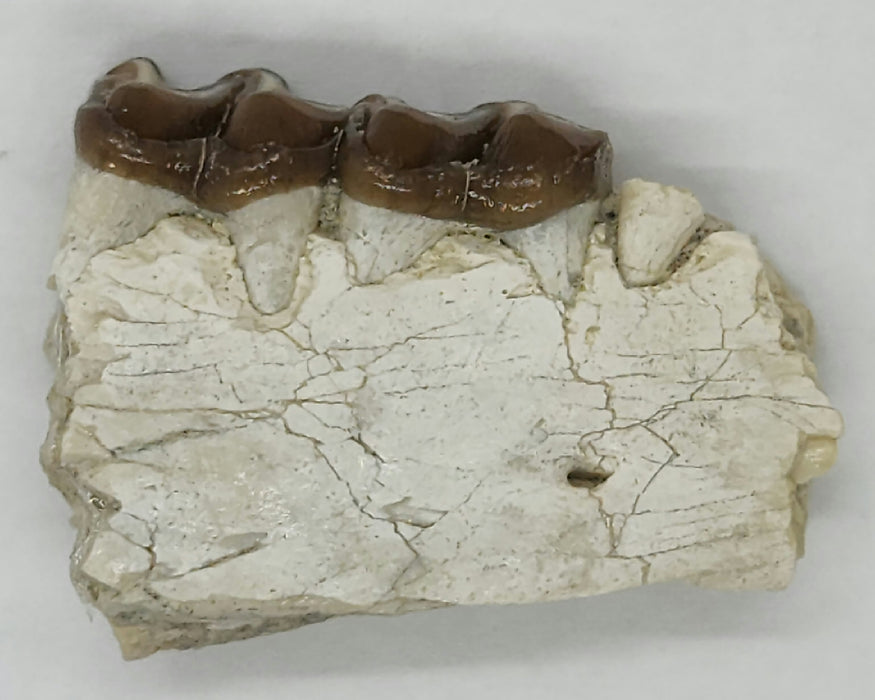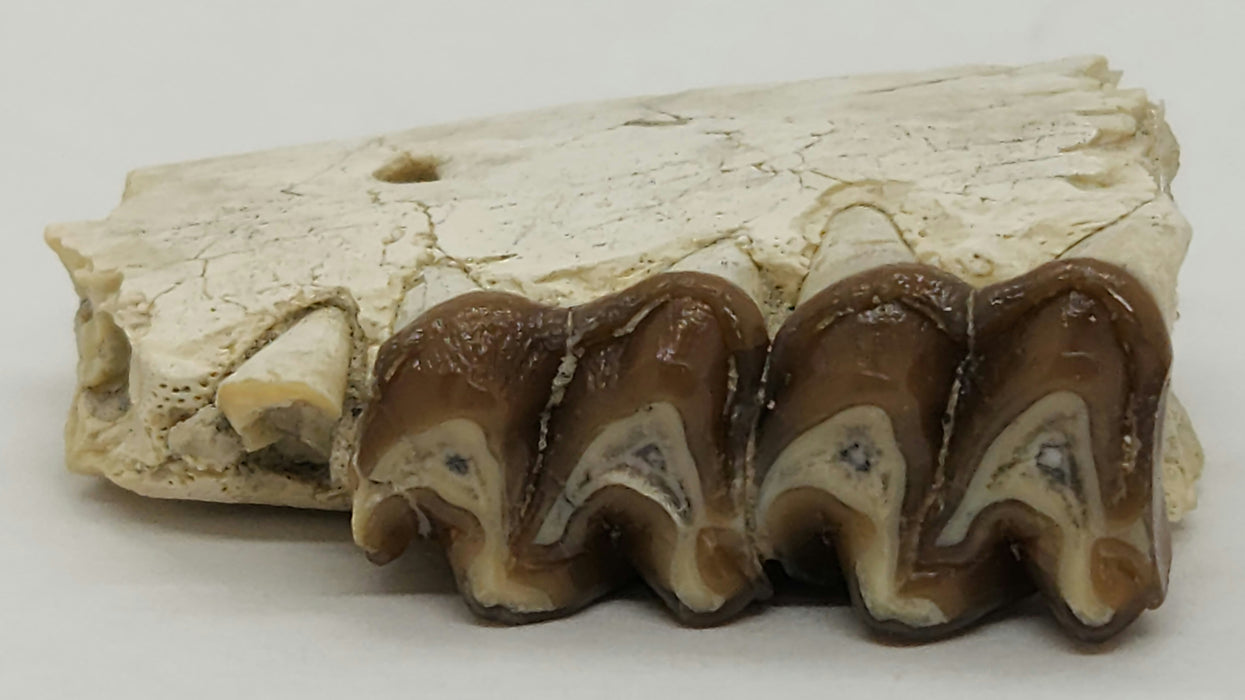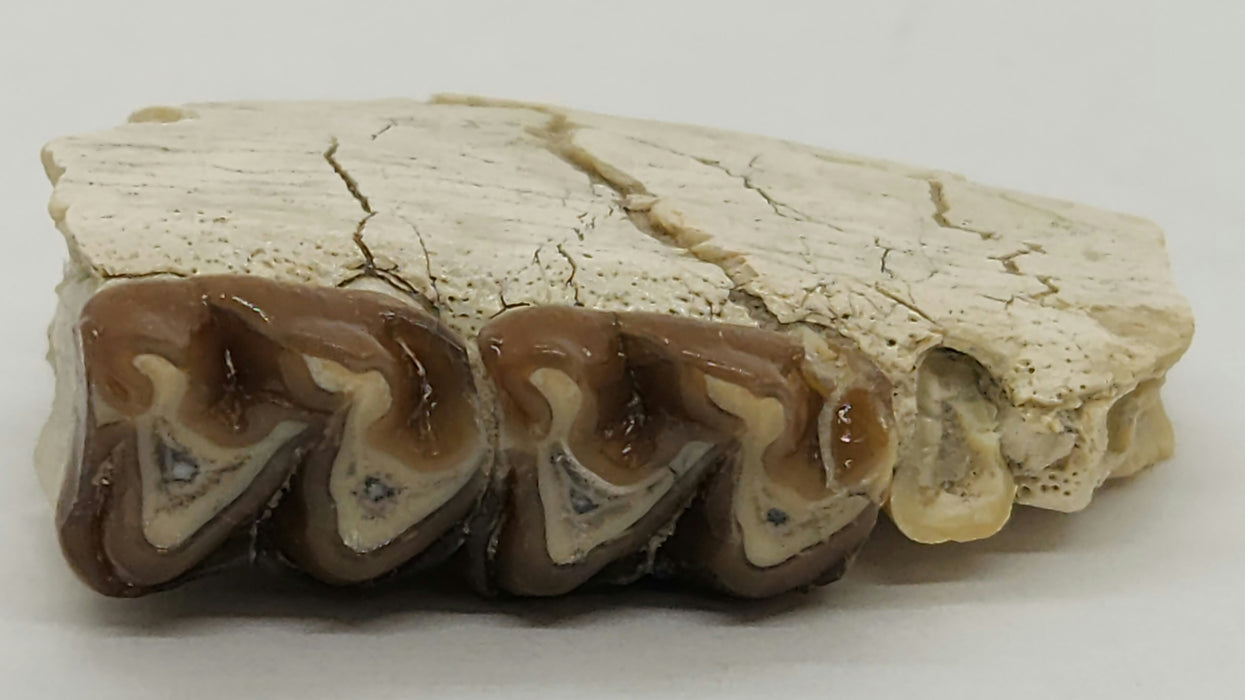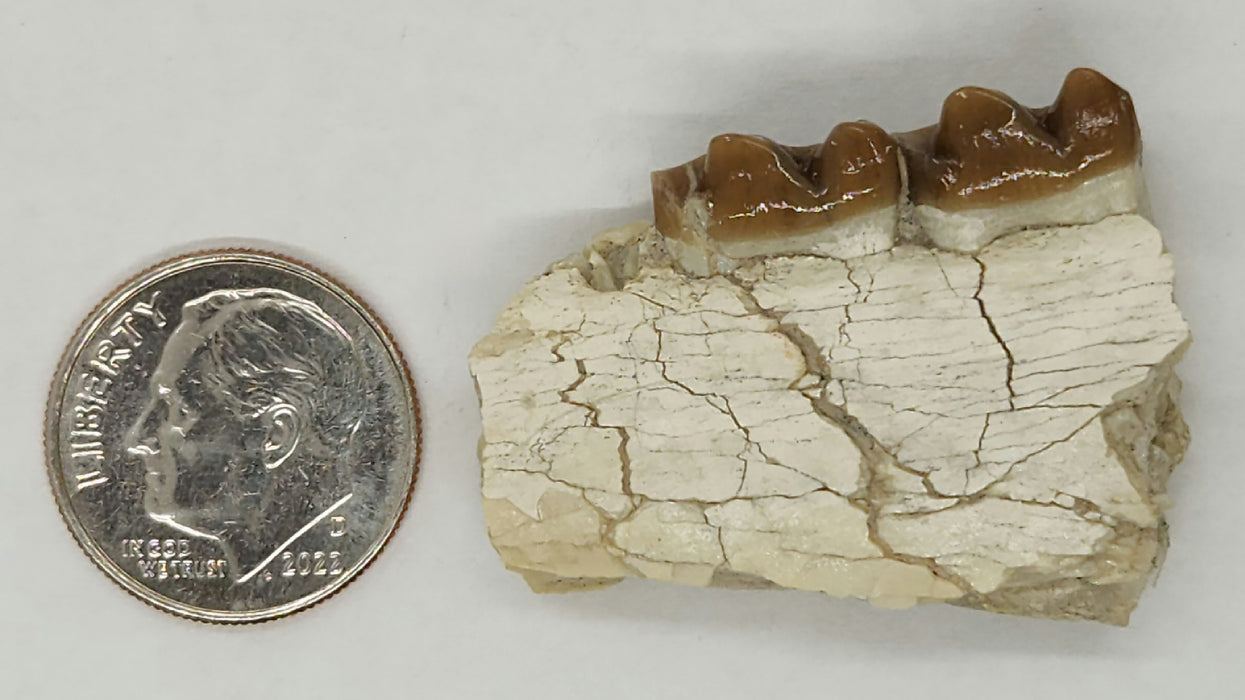
Horse Jaw Section | South Dakota
Specimen approx. size: 1.25" x 1" x 0.5"
Mesohippus is a genus of extinct early horse that lived during the late Eocene to early Oligocene epochs, approximately 37 to 30 million years ago. Its fossils are primarily found in North America, particularly in the White River Formation of the western United States. As a transitional form in equid evolution, Mesohippus illustrates key anatomical adaptations that mark the shift from forest-dwelling, multi-toed ancestors to the larger, single-toed grazers of open grasslands seen in modern horses.
Size and Body Structure
-
Mesohippus stood about 60 cm (24 inches) at the shoulder and weighed approximately 20–45 kg (45–100 lbs).
-
It had a more elongated body and limbs compared to earlier equids like Eohippus (Hyracotherium).
-
The skull was larger and more horse-like, with a relatively longer face and a shallow facial fossa (depression) in front of the eyes.
Limbs and Locomotion
-
Mesohippus possessed three toes on each foot, with the central (third) toe being the largest and bearing most of the weight—a key evolutionary step toward the single-toed limb of modern horses.
-
The longer limbs suggest improved running ability, likely an adaptation to more open habitats compared to its predecessors.
Dentition and Diet
-
Teeth show a progression toward hypsodonty (high-crowned teeth), though Mesohippus was still considered a browser, feeding on soft leaves and forest understory vegetation.
-
The premolars and molars were more complex, indicating an evolutionary trend toward more efficient processing of plant material.
Habitat and Ecology
-
Mesohippus lived in a mixed woodland and savanna environment, which was becoming more prevalent during the Oligocene as global climates cooled.
-
It was likely a herd-dwelling animal, showing early social behavior patterns inferred from fossil site assemblages.
Fossil Significance
-
Mesohippus is often highlighted in the evolutionary history of horses due to its intermediate morphology, bridging the gap between primitive four-toed equids and the later, larger grazing horses like Merychippus and eventually Equus.
-
Its remains are commonly found in the White River Badlands of South Dakota, Nebraska, and Wyoming, and it is a staple in vertebrate paleontology exhibits and studies.




